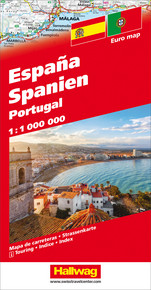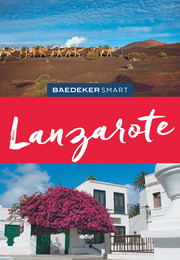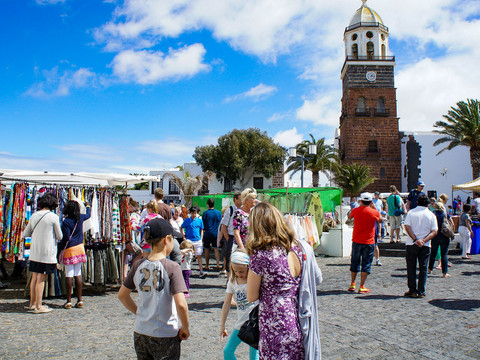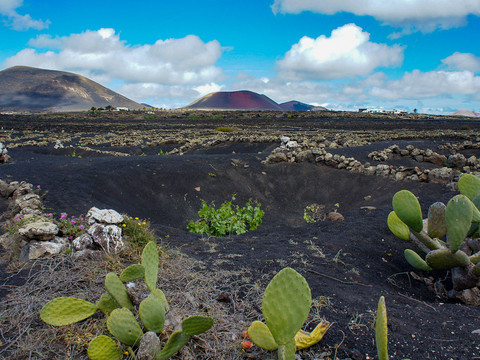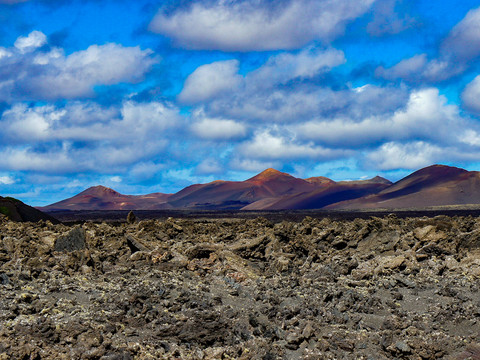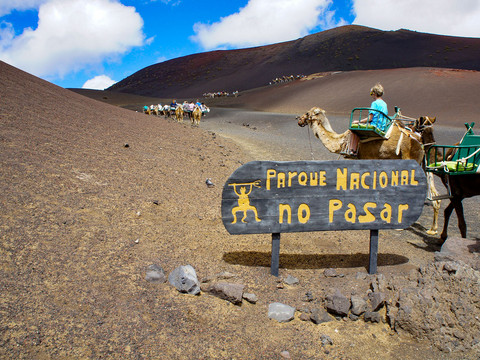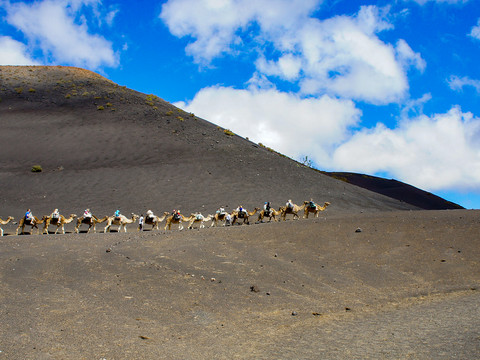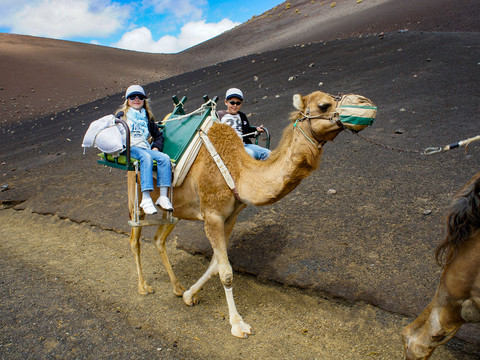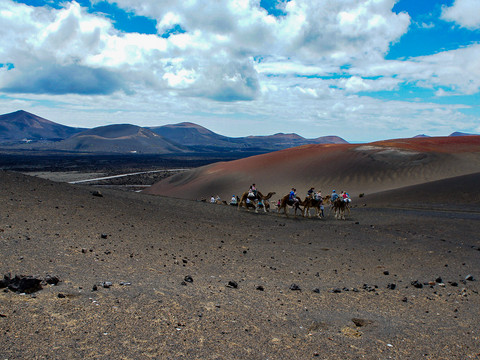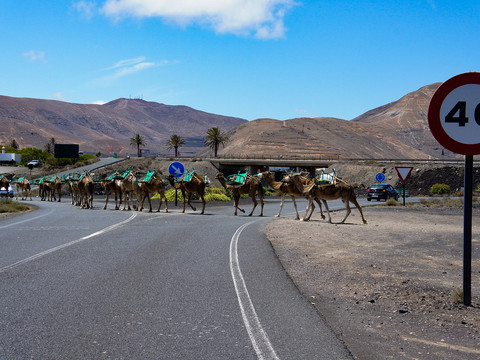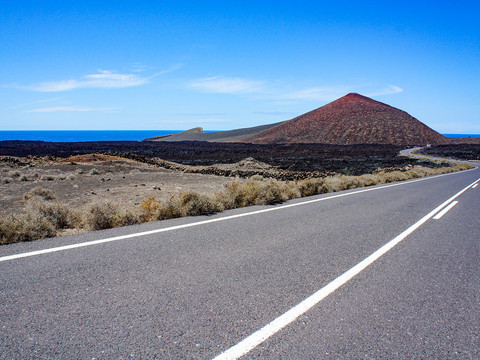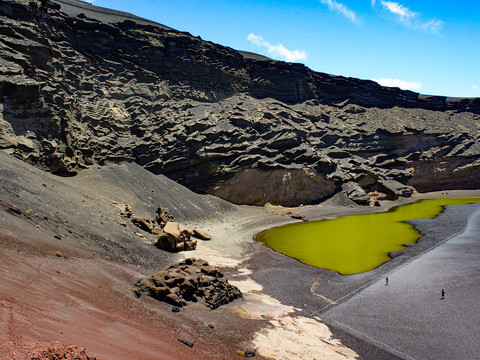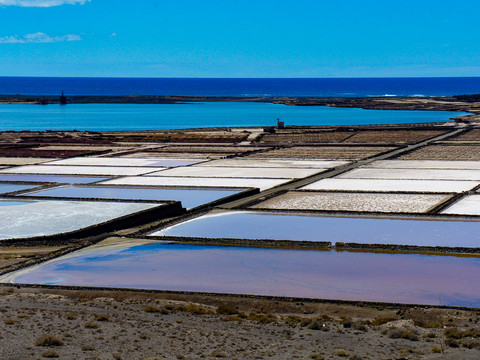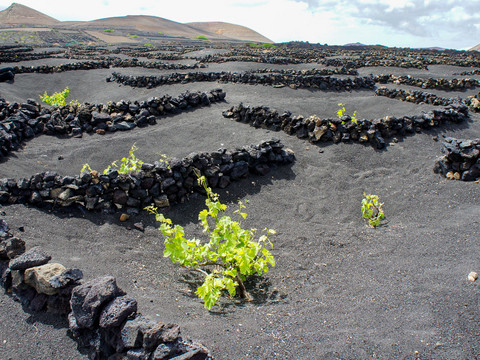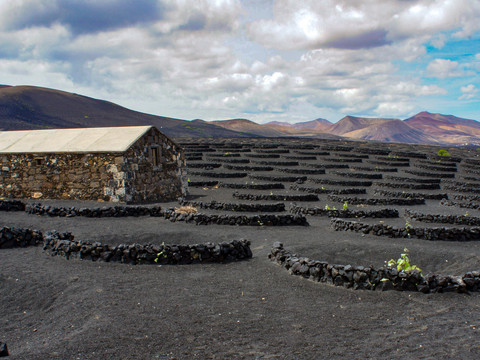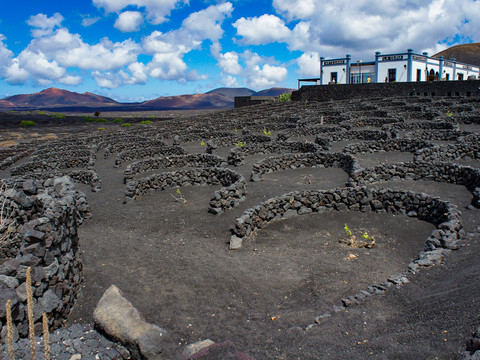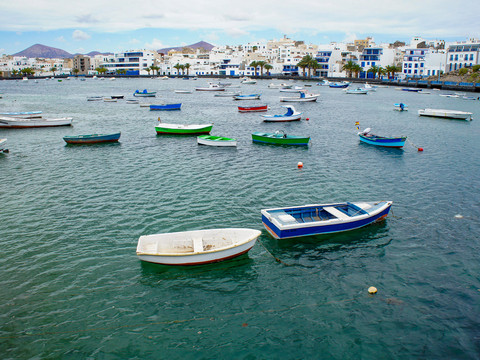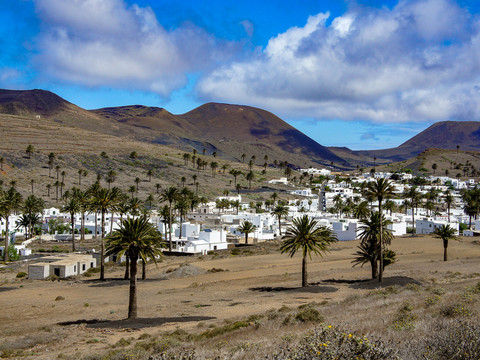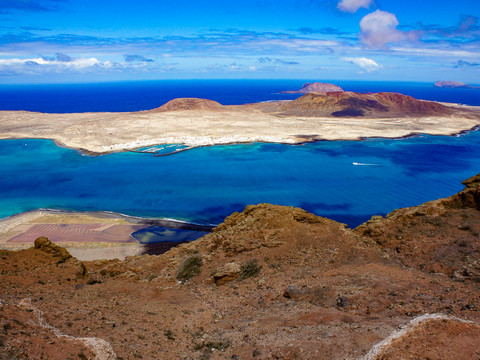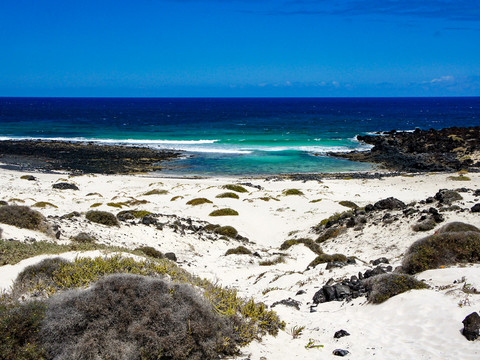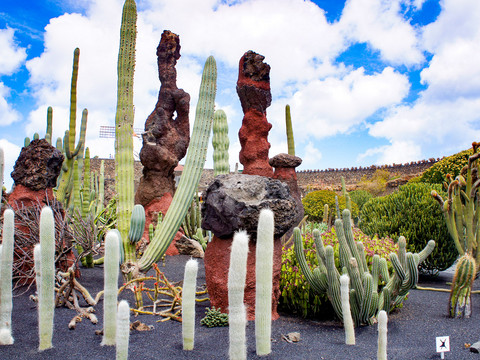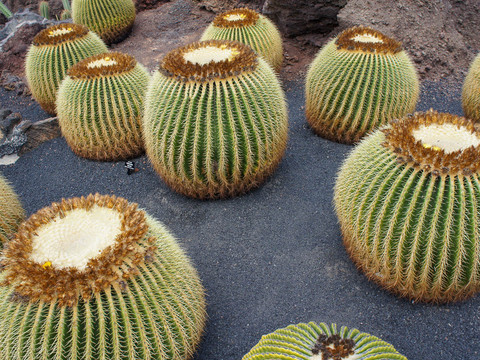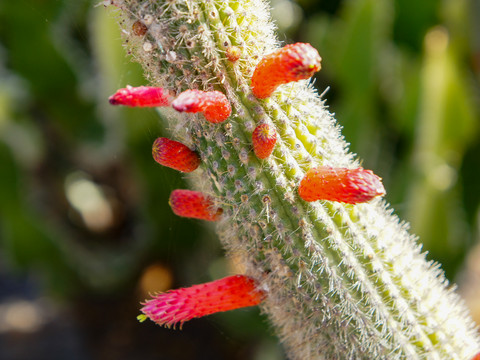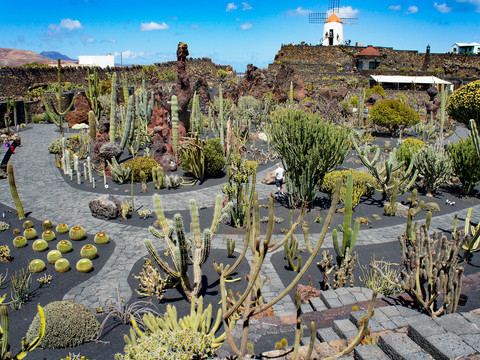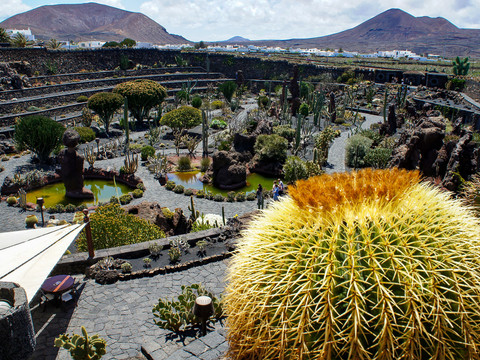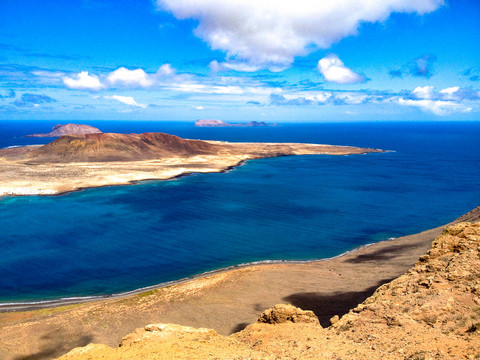Lanzarote's landscape, a great contrast of volcanoes, black and white sand beaches and the deep blue ocean immediately captivates you. The Papagayo beaches near Playa Blanca are a dream for every nature fan. And this Canary Island also has many other sights to offer: caves, lava tunnels, white villages, a cactus garden, numerous view points and of course the capital, Arrecife.
Lanzarote is the most north-eastern of the eight inhabited Canary Islands, located in the Atlantic Ocean approximately 140 kilometres to the west of the Moroccan coast. The island was already completely declared as a biosphere reserve by the UNESCO in 1993. To explore Lanzarote, it is best to choose an accommodation in the middle of the east coast. In Puerto del Carmen there are several good hotels, but also fincas on self-catering basis can be rented here without any problems. With a rented car, one can do one or two half-day or day trips in all directions, as one likes, in order to cool down in the afternoon at the pool or in the sea or simply enjoy doing nothing.
Thus, a day excursion could apply to the south west of the island. A first stop in Timanfaya National Park. The Montana del Fuego, or fire mountains, glow in all different shades of red, a fascinating volcanic landscape. Unfortunately the national park is overcrowded by tourists. In the visitor centre one can join a guided bus tour; but I do not recommend it. The landscape is as beautiful outside the area of the Montañas del Fuego National Park that is closed for the touristical bus tours. On the road from Yaiza up to the visitor centre at Mancha Blanca one can drive through the fascinating lava landscape and meet camels. Dromedaries in the Canary Islands? Indeed, the cuddly desert ships are perfectly suited to the landscape and living conditions on Lanzarote. This is why they were used for a long time as load, riding and draught animals in the agriculture. It is already practical if the working animal does not have to drink during the whole day and kneels down for loading. Today, the dromedaries mainly rock tourists on short round trips through the Timanfaya National Park.
In the fishing village El Golfo on the southwest coast, one of the most beautiful sights of Lanzarote awaits you: the green lagoon Charco de los Clicos. The lagoon is hidden in a crater that sinks towards the sea. The green colour of the water conjures a breathtaking contrast in the landscape of black lava beach and red-brown rocks. Not far away the next natural attraction Los Hervideros is waiting for you. Here on the lava coast, the constant roaring waves have created crevices and caves, which can be explored on narrow paths carved into the lava.
A few minutes by car further on, one gets to the Salinas de Janubio that is under monumental protection. The salt gardens shine in different colours and offer a unique bluish-white colour spectacle in the black lava landscape.
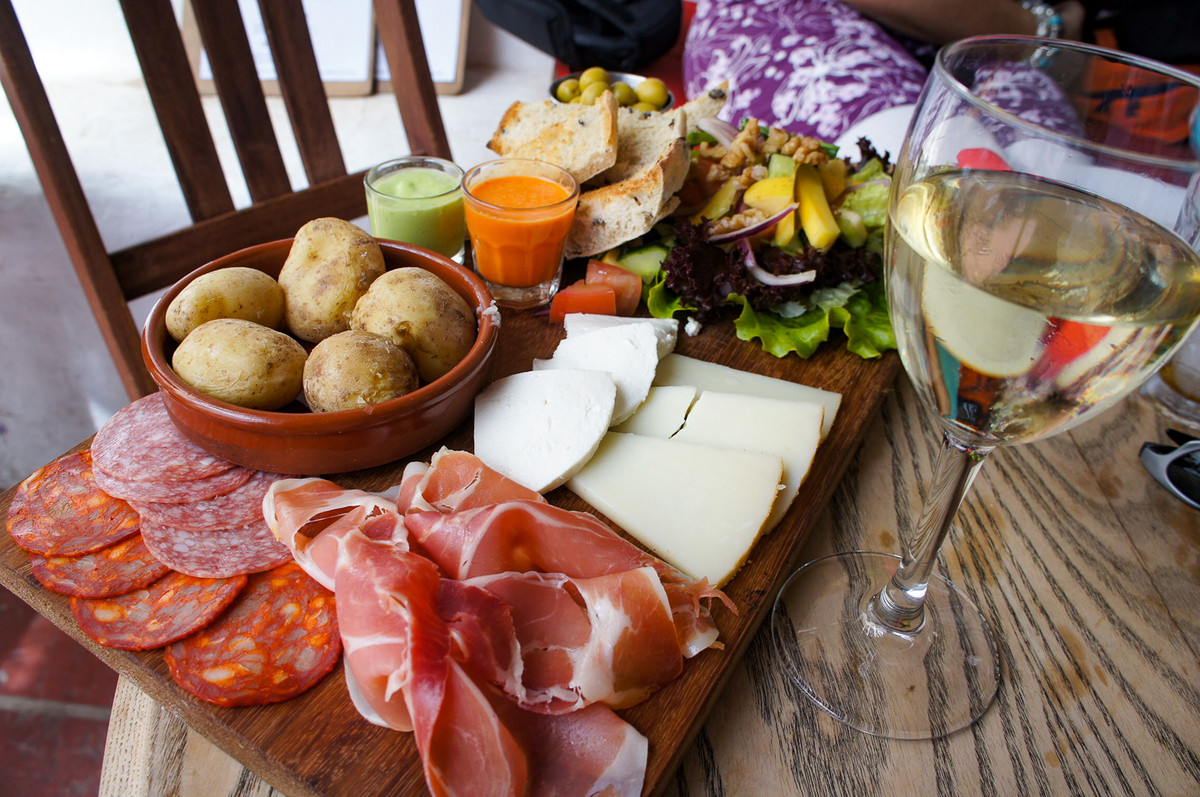
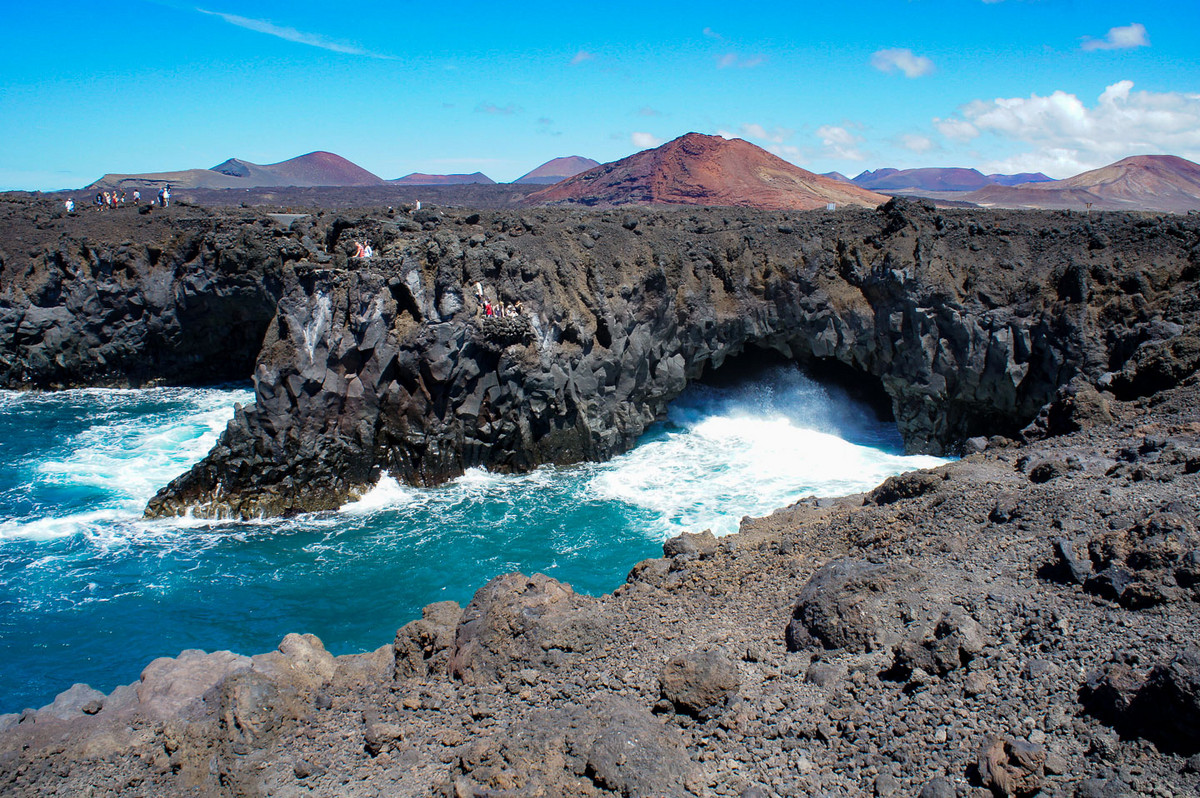
Now it's time for a lunch break and in the afternoon for a jump into the water. The holiday resort Playa Blanca in the south of Lanzarote scores with a long boardwalk, where one can stroll from one beach to the next while enjoying the view to the neighbour island Fuerteventura. Absolutely worth seeing and a highlight are the Papagayo beaches. A paradise for every nature fan. Fortunately, the hotel chains from Playa Blanca have not yet reached this point. Hopefully it will stay that way for a long time. The Papagayo beaches are only accessible by a sand road with costs or on foot. Here, one dream beach follows the next one. White sand, black rocks and turquoise water.
A visit to Arrecife, the capital of the island, could also be a change from beach life. The biggest city of Lanzarote is best explored on foot. A walk along the promenade to the Castillo de San Gabriel is recommended. Over a suspension bridge you reach the small castle, where you have a beautiful view over the whole of Arrecife. The church Iglesia de San Ginés in the oldtown is also worth seeing. My personal highlight in Arrecife is the lagoon Charco San Ginés. Here, colourful fishing boats idyllically bob in the shallow water. A picturesque sight, especially at sunset. Wine lovers are drawn to La Geria, which lies in the hills above Puerto del Carmen. The best impression of the wine-growing area you get on the road from Uga to the Monumento al Campensino. Here one bodega follows the next. For generations, dry farming was developed in La Geria. Semi-circular walls protect the individual vines from strong winds and create bizarre patterns in the black lava landscape.
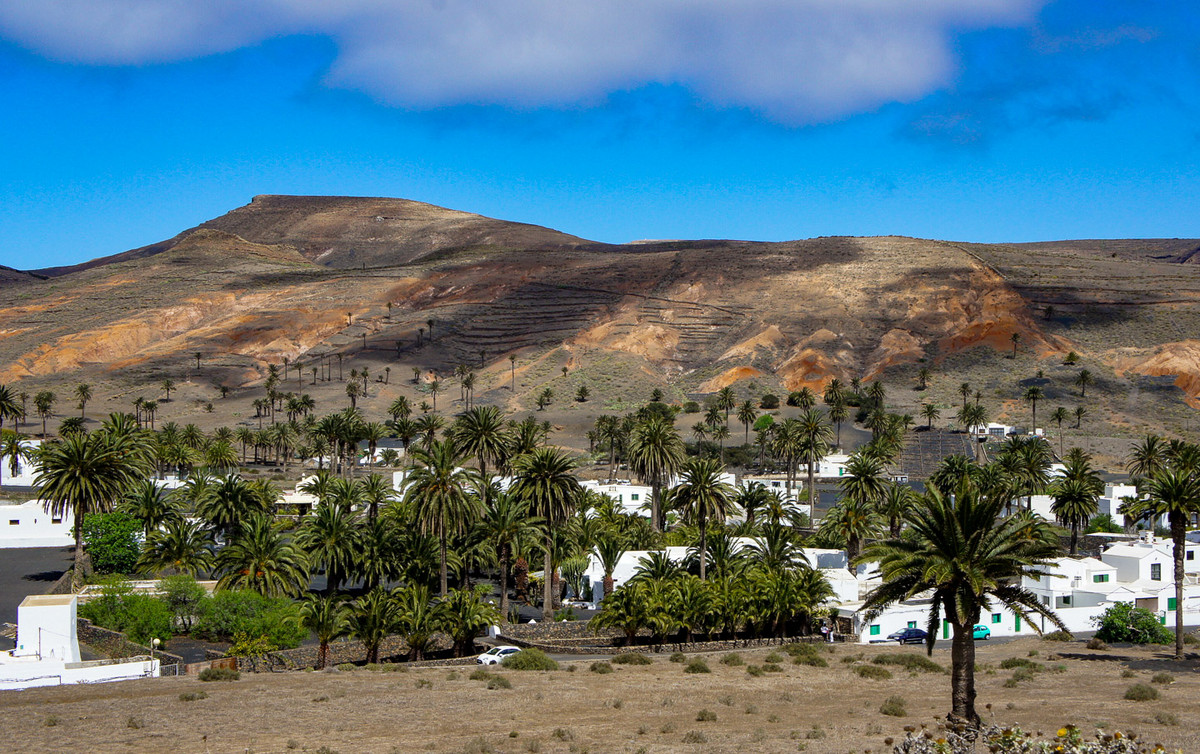
A second full day excursion could lead to the north of the island. Start in Teguise. The former capital boasts typical white buildings in Spanish colonial style. Besides churches, squares and small alleys, a large market place with cafés and shops invites you to stay. Sunday is market day in Teguise. The tour continues over the Famara mountains, the highest mountains of Lanzarote with a magnificent panoramic road and fantastic viewpoints. There is no other place in Lanzarote where there are so many palms as in the valley of Haría that is located in the middle of the Famara mountains. Palm trees form a great contrast to the barren landscape all around. Quasi a green oasis in the black lava. At the very north, the Mirador del Rio attracts. From here you can enjoy the stunning panorama of the little sister island La Graciosa, which you can also visit. An impressive sight is Jameos del Agua, created by the local artist and environmentalist César Manrique. The lava tunnel was originated during the eruption of the Monte Corona approximately 3000 years ago. Manrique has created a unique work of art from lava, combining nature and culture. Green plants and palm trees grow all over the site, creating a beautiful contrast to the black lava. Beside the concert cave and the beautifully arranged pool, Jameos del Agua fascinates with a salt lake with albino crabs. The crabs are blind and extremely sensitive to light. Normally the crawling animals live at a depth of several 1000 meters. It is still an unsolved mystery why they are also found in the salt lake of Jameos del Agua. The end of the day trip could end in the Jardín de Cactus. The circular cactus garden has a variety of large and small cacti, funny shapes and bright colours. Above it all, a typical windmill towers, as it can be found in other places on the island.
And finally a culinary tip that you should not miss: Tapas feast in a typical bodega. I would like to recommend the Bodega el Chupadero. The tapas menu here clearly exceeds the Canarian potatoes and the usual Canejo rabbit. The dates in the bacon coat for example were wonderful! There is also the possibility to sit outside with a view to the lava formations.

To properly prepare for your trip
That'll get you there:
nonstop with Edelweiss
How long am I supposed to go:
1 - 2 weeks
Best time to travel:
all year round
Highlights:
Timfanja National Park, magic beaches, cactus garden, bodegas
Overnight stay tip:
https://www.lascasascanarias.com/ferienhaus-lanzarote-urlaub/index.html
Bodega tip:
El Chupadero in La Yaiza
More info:
www.turismolanzarote.com
Realised by Michael Bachmann
Further travel pictures under www.kissed-by-nature.com

